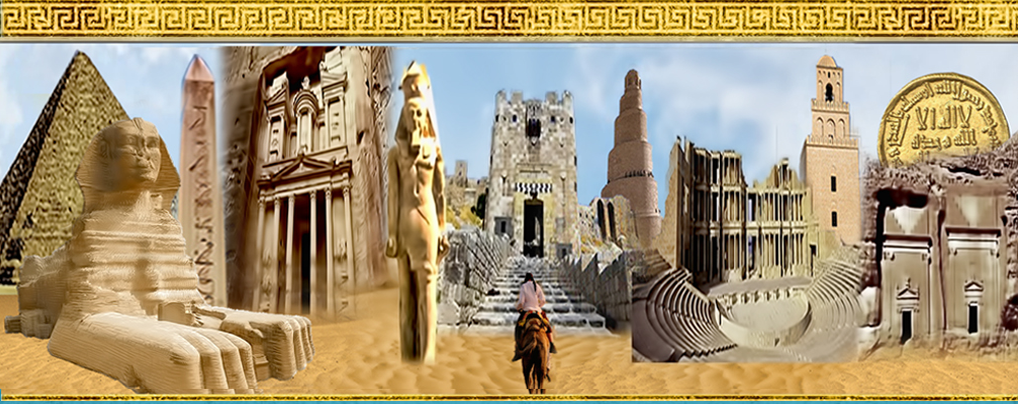Journal of the General Union of Arab Archaeologists

Abstract
[Ar]
رؤية جديدة لآثار موقع الرجاجيل
يقع موقع الرجاجيل الغامض على بعد 10 كيلومترات جنوب غرب سكاكا في منطقة الجوف بالمملكة العربية السعودية. تضم آثار الموقع 54 مجموعة منفصلة من أعمدة الحجر الرملي المحلية التي تتكون من أكوام دائرية بسيطة من الصخور المهشمة. ترتبط هذه المجموعات بدائرة ممتدة وغير منتظمة يبلغ قطرها حوالي ثمانمائة متر. إنهم يحملون بعض العلامات الثمودية التي تجعل هذا الموقع غامضًا. لا يُعرف سوى القليل عن آثار الرجاجيل، التي تعود إلى العصر الحجري الحديث والعصر النحاسي (حوالي 6500 إلى 2800 قبل الميلاد)، لأن البحث في ثقافات الرجاجيل لا يزال في مراحله الأولى. نظرًا لندرة المصادر، حاول كل باحث تفسير هذا الموقع الحجري بشكل منفصل دون ربطه بالآراء الأخرى. لذا ترسم الورقة البحثية سيناريو يمكن أن يربط بين الوظائف المقترحة واختفاء حضارة الموقع من الولادة إلى الموت من خلال نقطتين: أولاً، يمثل موقع الرجاجيل مستوطنة محلية تضم العديد من المباني للإسكان والعبادة والأنشطة المدنية. وعليه، فإن الأعمدة الحجرية وأبراج موقع الرجاجيل هي بقايا هذه المباني المنزلية. غيّر الرعاة الذين استقروا في الموقع أسلوب حياتهم من «الرعي» إلى «الواحة». ثانيًا، أدى التغير المناخي الشديد إلى تدهور الموقع بسبب انتشار الجفاف والتصحر تدريجيًا. كما خلفت عاصفة قوية مفترضة الدمار في منطقة موقع الرجاجيل. فقد سقطت مباني الموقع في العاصفة وتضررت إلى أجزاء، كما يمكننا رؤيتها كأكوام حجرية بشكل منفصل في الموقع. أصبحت المنطقة جرداء وجفت جميع الآبار. قد تكون هذه الأسباب قد أجبرت السكان على الهجرة من موقع الرجاجيل إلى منطقة أخرى. في وقت لاحق، قام بعض المسافرين أو البدو المحليين بالتخييم في الموقع وإعادة استخدام بعض الأعمدة الحجرية كأعمدة خيام (منازل البدو) بينما أعادت استخدام الأعمدة الأخرى كشواهد قبور. لقد تركوا بعض العلامات / الكتابة على الجدران / النقوش على الأعمدة. لعل عدم وجود مواد عضوية بين الأكوام الحجرية بسبب التحلل أو كارثة حريق. فقد عانى موقع الرجاجيل في أوقات غير معروفة من حرائق عشبية ضخمة، اعتيادية في المنطقة. يروي موقع الرجاجيل القصة الحقيقية لميلاد وموت حضارة محلية عاشت في صمت صحراء شبه الجزيرة العربية.
[EN] The enigmatic site of Rajajil is located precisely 10 km southwest of Sakaka in the Jawf region of the Kingdom of Saudi Arabia. The site monuments include fifty-four separated groups of local sandstone pillars comprising simple circular heaps of damaged boulders. These groups are related to an extended and irregular circle of about eight hundred metres in diameter. They bear some Thamudic signs that make this site mysterious. Little is known about the Rajajil monuments, which date from the Neolithic and Chalcolithic eras (c. 6500 to 2800 BC), because research into the Rajajil Cultures is still in its early stages. Due to the scarcity of source material, every scholar tried to interpret this megalithic site separately without connecting it with the other views. The paper draws a scenario that could connect the suggested functions and the disappearance of the site's civilization from birth to death through two points: First, the Rajajil site represented a domestic settlement comprising many buildings for housing, worshipping, and civil activities. Accordingly, the stone pillars and the carins of the Rajajil site are the remains of these domestic buildings. The shepherds who settled on the site changed their lifestyle from «pastoralization» to «oasisisation». Second, drastic climate change has led to the site's decline because of gradually spreading dryness and aridity. A supposed powerful storm left a trail of devastation in the area of the Rajajil site. The site buildings fell in the storm and were damaged into pieces, as we can see them as carins separately in the location. These sandstorms caused the region to become barren and all the wells to run dry. Such reasons may have forced the settlers to migrate from the Rajajil site to another area. Later, some travellers or local Bedouins camped the site and reused some stone pillars as tent poles (Bedouins houses) while the other pillars were reused as gravestones. They left a few signs/graffiti/inscriptions on the pillars—the absence of organic matters among the carins due to the decomposition or a fire disaster. Rajajil suffered from massive grass fires, typical for the area, at unknown times. The Rajajil site tells the true story of the birth and death of a local civilisation that lived in the desert's silence of the Arabian Peninsula.
Recommended Citation
Kacem, Mohamed Mahmoud
(2022)
"A NEW VIEW ON THE MONUMENTS OF THE RAJAJIL SITE,"
Journal of the General Union of Arab Archaeologists: Vol. 7:
Iss.
1, Article 4.
Available at:
https://digitalcommons.aaru.edu.jo/jguaa/vol7/iss1/4

